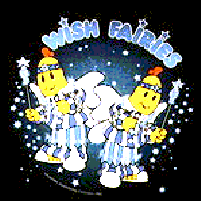 Welcome to the COMB FAQ
Welcome to the COMB FAQ
Q. How do you pronounce comb?
A. Comb is pronounced like the first syllable of
the word "combine." It is most definitely not pronounced
like the grooming instrument :-).
Q. What does comb stand for?
A. Nothing.
Q. When I type 'comb' I get the error message:
ERROR: missing file arg (cm3)
What does that mean?
A. It means you are really running the UNIX SCCS program which is,
unfortunately, called 'comb.' Change your PATH so that $COMB/bin is
first.
Q. Is there a macro to do ...?
A. Maybe. You can check out the global macros file $COMB/lib/.GMACROS
with dm g:. Also ask around to other users.
Q. Can comb read spectra in ... format?
A. Comb can read spectra in the following formats:
- Bell Labs Spectral Data Format
- NRAO PDFL and SDD formats
- FITS files written by most other singledish programs (e.g. CLASS, SPA).
Q. What does "Collecting garbage in search file" mean?
A. If you have made many changes to your current stacks directory,
e.g., stored or emptied many stacks, comb will update
and clean out the search file for that directory, and give
you this message. It is normal and nothing to worry about.
Q. When I type lk, I don't see anything or see only
a portion of my stack locations. What's wrong?
A. There are several possibilities:
- You don't have a relative coordinate system defined (or you've
got the wrong one defined). Use rc to define one.
- You have previously restricted the stack number range or the
frequency range such that no stacks match the restrictions. You can
un-restrict them with the sn: or fr: flags to
lk.
- If and only if all the above fail to fix your problem,
then it is possible that your search file has been corrupted.
This can happen if multiple users have the same stacks directory
open and are storing or emptying stacks.
It can be repaired with up.
Q. How do I write FITS images or cubes so that the FITS keywords
RA---SIN and DEC--SIN are present instead of RA and DEC?
A. Set op ortho: for orthographic projection
before making the map.
Q. Why doesn't the initial value of .rms in a scan match the value that
rm gives for that scan?
A. Because pl uses the value of .rms
in autoscaling plots, an initial value of .rms is estimated by
gt based on receiver noise, filter width,
integration time, and switching mode. (If .rms were left as zero,
pl would blow up when trying to plot).
As soon as you have the baseline under control, you should
run rm on the stack to
calculate the true rms.
Q. After I remove a baseline with li, the stack
rms value .rms has not changed. What gives?
A. The stack rms must be recalculated with rm.
Q. Sometimes when I contour an image with cp,
I see nothing in the plot and the contour labels with numbers like
1E-308,...,5E-313. What gives?
A. You have given comb a contour step which is greater than the data range
present in the image. Try cp a:, which will
automatically contour the image and give you a better idea of the data range.
Q. I got this message from comb:
*** SOFTWARE PROBLEM ***
Caught signal: {SIGNAL NUMBER} in command {COMMAND}.
Do you want to make a record?
What does it mean and what should I do?
A. This means you have either uncovered a bug in comb, or somehow
got it into a state where it wants to dump core. You should answer 'y'
to the question and then e-mail the file $COMB/lib/cerr to
Marc Pound.
Please indicate what you were doing at the time. If you have a limit on
coredump (e.g., in csh), $COMB/lib/cerr may not contain useful
information,
but send it anyway. In either case, you may wish to quit comb and start
it up again.
Q. I get the error "ridiculous numpt" when I try to retrieve a
stack. What's that mean?
A. It can mean one of two things. 1. The search file for
the stacks is corrupted. The solution to this is to run up swap: on the stacks.
The FAQ will grow as I think of more questions. Suggestions are welcome!
This document was last updated on
This document was last updated on
21-Apr-2003
 Welcome to the COMB FAQ
Welcome to the COMB FAQ Welcome to the COMB FAQ
Welcome to the COMB FAQ